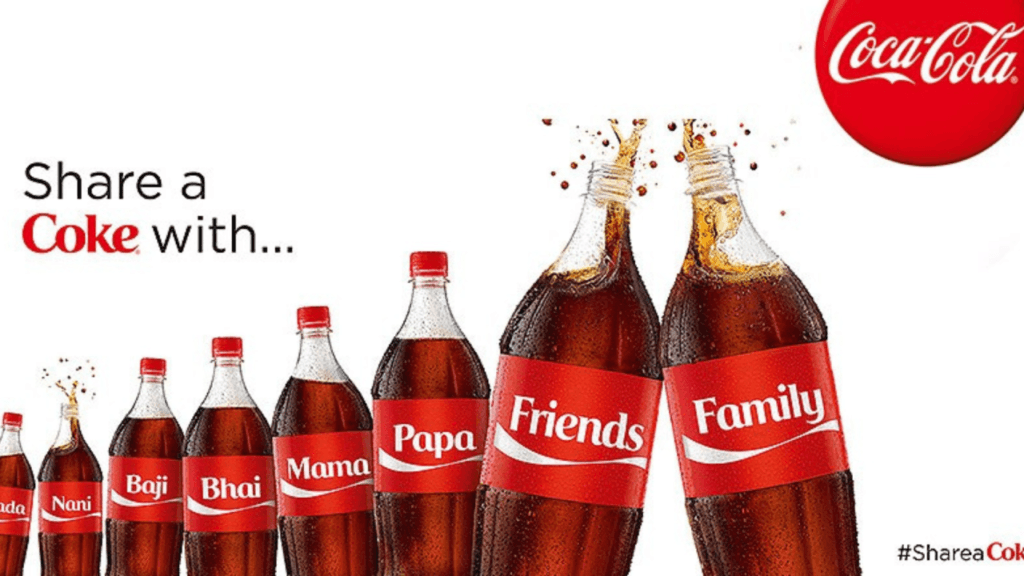Few marketing campaigns have achieved the level of global recognition and emotional connection as Coca-Cola’s “Share a Coke” campaign. Launched in Australia in 2011 and later expanded worldwide, this campaign transformed the traditional beverage-buying experience by replacing the brand’s iconic logo with popular names and phrases, encouraging consumers to find a bottle with their name and share it with friends and family.
This simple yet brilliant idea drove massive consumer engagement, skyrocketed sales, and redefined the power of personalization in advertising. At AdCraft, where we decode the marketing genius behind successful campaigns, Coca-Cola’s Share a Coke remains a gold standard for brand storytelling, emotional marketing, and consumer participation.
In this blog, we’ll break down the success factors of this campaign and its impact on the future of marketing strategies.

1. The Birth of “Share a Coke”: A Game-Changer in Branding
Coca-Cola’s challenge in the early 2010s was clear: how to engage the younger generation, particularly millennials, who were moving towards healthier drink options and digital interactions.
The solution? Make Coca-Cola personal.
By replacing the Coca-Cola logo on bottles with the most common first names in each country, the brand turned a regular soda bottle into a personalized experience. For the first time, buying a Coke wasn’t just about quenching thirst—it became an interactive, shareable moment.
The campaign created an instant emotional connection between consumers and the brand, sparking excitement as people searched for their own names or those of their loved ones. The limited-edition nature of the bottles further fueled demand, making each bottle feel special and unique.
Why Did It Work?
✅ Personalization: Consumers love seeing their names on products—it feels exclusive.
✅ Emotional Connection: The campaign encouraged people to think of others (friends, family, partners) and buy a Coke for them.
✅ User Engagement: Social media users began sharing pictures of their personalized Coke bottles, organically promoting the brand.
2. Social Media: Fueling the Virality of the Campaign
The success of Share a Coke was not just about putting names on bottles—it was about creating a social movement. Coca-Cola leveraged social media to amplify the campaign, encouraging consumers to post pictures of their personalized bottles with the hashtag #ShareACoke.
🔹 User-Generated Content (UGC) became a major driver of the campaign’s success. People loved sharing their Coke bottles online, tagging friends, and challenging them to find their own names.
🔹 Social Media Engagement skyrocketed, with millions of mentions, tweets, and Instagram posts flooding the internet.
🔹 Influencer Collaborations further boosted visibility, as celebrities and influencers joined the trend.
Fun Fact:
In just one summer, the campaign resulted in over 500,000 photos shared on social media and a 7% increase in Coca-Cola consumption among young adults in Australia!
3. Expansion and Evolution: A Global Sensation
Following its initial success in Australia, Share a Coke expanded to more than 80 countries, adapting the campaign for each market. Localized names and cultural phrases made it relevant across diverse demographics.
In countries where common first names were less suitable, Coca-Cola adjusted the approach:
✅ China used nicknames and common phrases instead of personal names.
✅ The UK and US added song lyrics and terms like “BFF” and “Soulmate” to appeal to different emotions.
✅ Some countries even let customers customize their bottles through online platforms.
This adaptability made Share a Coke a truly global campaign, strengthening the brand’s connection with different audiences.
4. The Power of Personalization in Marketing
Coca-Cola’s Share a Coke campaign set a new benchmark for personalized marketing, proving that brands win when they make customers feel seen and valued. Since then, many brands have adopted customization strategies to boost engagement, including:
✅ Starbucks’ Name on Cups: Encouraging personalized customer interactions.
✅ Nutella’s Custom Jars: Letting customers print their names on Nutella jars.
✅ Spotify Wrapped: Providing users with personalized music stats each year.
This trend highlights the power of individualized experiences in modern digital marketing, where brands must connect personally to stay relevant.
5. Lessons Brands Can Learn from “Share a Coke”
Coca-Cola’s campaign wasn’t just about selling more soda—it was a masterclass in emotional marketing and customer engagement. Here are some key takeaways for brands looking to replicate this success:
✅ Make It Personal
People engage more when they feel a personal connection with a brand. Personalization increases brand loyalty and creates a sense of belonging.
✅ Encourage Social Sharing
A campaign that integrates social media engagement and user-generated content can exponentially boost brand reach.
✅ Create a Sense of Urgency
Limited-time campaigns create FOMO (Fear of Missing Out), driving immediate consumer action.
✅ Stay Adaptable
The ability to localize campaigns for different markets ensures broader audience appeal.
✅ Leverage Technology for Customization
From AI-driven recommendations to interactive apps, brands should explore new ways to offer personalized experiences.
Conclusion: Why “Share a Coke” Still Matters Today
Over a decade later, Coca-Cola’s Share a Coke campaign remains one of the most successful marketing strategies of all time. It demonstrated that personalization, emotional storytelling, and social engagement are key drivers of brand success.
At AdCraft, we believe that campaigns like Share a Coke serve as blueprints for modern marketing, showing how brands can transform simple ideas into global movements.
So, what’s the next big personalized marketing campaign? Only time will tell. But one thing is certain—brands that connect emotionally, engage socially, and innovate constantly will always lead the game.
